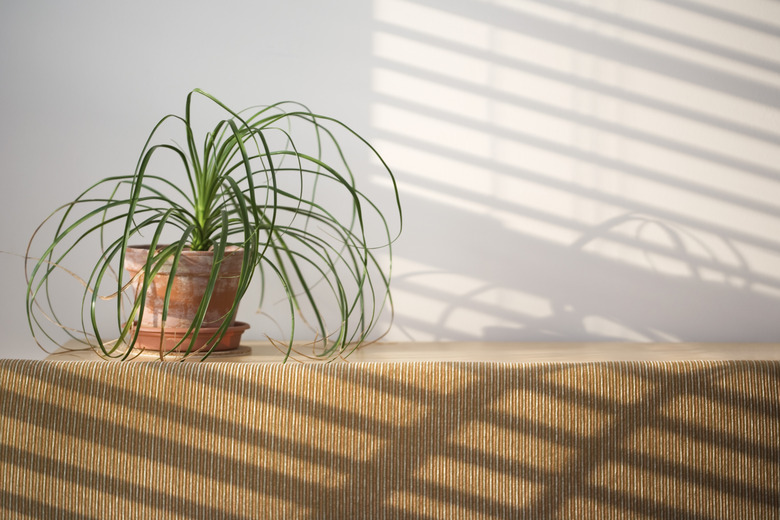How To Separate Ponytail Palms
Things Needed
- Cactus mix potting soil
- Container
- Knife
Tip
Don't worry if there are no roots on the bulblets of the ponytail palm, rooting hormone encourages their development.
The ponytail palm (Beaucarnea recurvata), which is not actually a palm at all, grows happily for a few years, giving the gardener no reason to think of repotting. During this forgotten time, the large bulb grows and multiplies. After a few years, it is ready for a new container and sometimes provides more plants, If the plant has been in the same pot for awhile, bulblets may be visible above the soil. If the pot is heavy, enlist some help moving it to a good area for dividing the plant and repotting.
Preparation
Step 1
Water the ponytail palm the day before repotting it.
Step 2
Choose a container, moving up one size from the current container. If selected container was previously used, sterilize it before putting in a new plant. Have small containers ready for bulblets that grow beneath the soil.
- The ponytail palm (Beaucarnea recurvata), which is not actually a palm at all, grows happily for a few years, giving the gardener no reason to think of repotting.
- After a few years, it is ready for a new container and sometimes provides more plants, If the plant has been in the same pot for awhile, bulblets may be visible above the soil.
Step 3
Moisten the potting soil. A pre-mixed cactus soil is ideal for the ponytail palm.
Step 4
Remove the ponytail palm from its pot.
Step 5
Remove old soil from the roots and dispose of it. If bulblets are growing from the main bulb, remove them with a sharp knife to pot into different containers. If potting baby bulblets, apply rooting hormone first.
Potting the Plant
Step 1
Trim the root tips slightly to increase vigor of the bulblets as well as the parent plant.
- A pre-mixed cactus soil is ideal for the ponytail palm.
- Trim the root tips slightly to increase vigor of the bulblets as well as the parent plant.
Step 2
Fill the new containers one-third full of soil. Use small containers for the offsets you have removed.
Step 3
Anchor the large ponytail bulb in its new container. Fill in around the bulb with soil, to the same level it was planted in the previous pot. Leave the top third of the bulb visible, without soil covering it. Leave a well between the top of the soil and the rim of the pot. Do the same for each offset.
- Fill the new containers one-third full of soil.
- Leave a well between the top of the soil and the rim of the pot.
Step 4
Move the ponytail palms to their permanent location. The ponytail palm prefers bright but filtered light. Add a saucer to catch water under containers..
Step 5
Water thoroughly. As a semi-succulent, the ponytail palm requires water only when the top few inches of soil are dry. Water more sparingly in winter.
References
- "The Complete Houseplant Survival Manual", Barbara Pleasant, 2005
- "Southwest Yard & Garden"; Propagate Ponytail Palm; May 2003
- University of Misouri Extension; Caring for Houseplants; David H. Trenklein; April 2010
